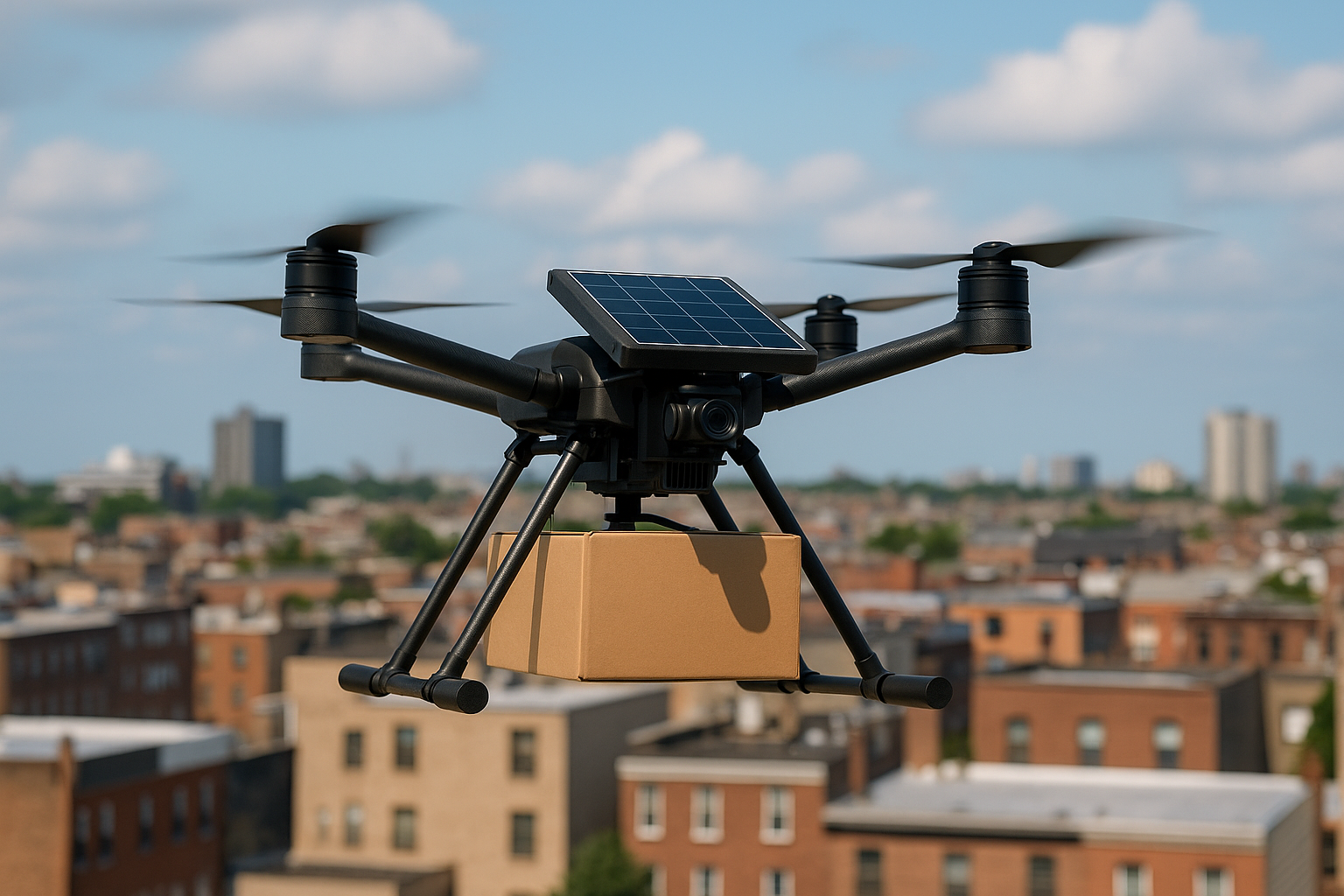Eco-efficient AI drones could transform last-mile logistics in smart cities
The proposed UAV platform incorporates brushless direct current (BLDC) motors, high-density lithium-polymer batteries, and perovskite-based solar cells to increase energy efficiency. A key component is a Deep Q-Network (DQN) that manages flight route selection and energy allocation based on real-time conditions such as wind patterns and payload weight. This intelligent routing minimizes unnecessary energy use while ensuring the drone can adapt to dynamic environmental factors.

A team of researchers has introduced an innovative framework that combines artificial intelligence and renewable energy to improve the sustainability of unmanned aerial vehicles (UAVs) used for urban deliveries. The study presents a concept for drones that consume less energy, operate more efficiently, and reduce emissions in densely populated cities.
The research, published in Energies and titled “AI-Enhanced Eco-Efficient UAV Design for Sustainable Urban Logistics: Integration of Embedded Intelligence and Renewable Energy Systems”, examines how onboard AI and renewable energy components can transform UAV logistics into a greener, more resilient mode of transport. The study highlights the potential for deep reinforcement learning to optimize flight operations and reduce the environmental impact of delivery services.
Rethinking urban delivery through AI and renewable energy
Conventional drones often face energy inefficiencies and limited range, which restrict their viability for large-scale urban logistics. By integrating embedded artificial intelligence with renewable energy components, the new framework addresses these challenges head-on.
The proposed UAV platform incorporates brushless direct current (BLDC) motors, high-density lithium-polymer batteries, and perovskite-based solar cells to increase energy efficiency. A key component is a Deep Q-Network (DQN) that manages flight route selection and energy allocation based on real-time conditions such as wind patterns and payload weight. This intelligent routing minimizes unnecessary energy use while ensuring the drone can adapt to dynamic environmental factors.
Drones equipped with this hybrid system achieved up to 18 percent lower energy consumption and a 12 percent increase in area coverage per charge in simulated urban and open-field scenarios. By reducing dependence on fossil fuel-based logistics and improving last-mile delivery efficiency, these UAVs could play a pivotal role in reducing emissions in city environments.
Performance gains and challenges in real-world transition
The research demonstrates that the AI-enhanced UAV achieved not only better energy performance but also improved safety and resilience. Structural safety factors were maintained above acceptable thresholds, even under challenging wind conditions. The drone’s onboard sensors also provided continuous monitoring of motor health and battery charge, reducing risks of in-flight failures.
Simulation tests revealed that the framework’s energy estimation model achieved a mean absolute error of 15.37 Wh and a mean squared error of 375.56 Wh, making it suitable for embedded hardware without significant computational overhead. While more advanced algorithms such as Twin Delayed Deep Deterministic Policy Gradient (TD3) and Deep Deterministic Policy Gradient (DDPG) showed higher theoretical accuracy, they were deemed too computationally intensive for lightweight, battery-powered UAV systems. This makes DQN a practical choice for high-level decision-making in resource-constrained environments.
However, the authors caution that all results were derived from simulation-based assessments. Real-world deployment may face new challenges, including sensor noise, signal disruptions in dense urban canyons, unmodeled aerodynamic effects, and regulatory barriers for beyond-visual-line-of-sight operations. The researchers also note that standard DQN lacks formal stability guarantees, which will require further refinement through techniques like Safe Reinforcement Learning and Lyapunov-based approaches.
Path forward for greener urban air mobility
The study lays out a roadmap for transitioning from simulation to practical implementation. The next steps include hardware-in-the-loop testing, laboratory validation of perovskite solar integration with motors and batteries, and phased outdoor trials. These stages aim to ensure that the UAV can operate reliably under real-world conditions while maintaining its eco-efficient performance.
The authors advocate for exploring hybrid control architectures, which combine DQN for high-level route planning with continuous-action models for precise low-level actuation. This approach could help address the limitations of discrete-action algorithms while maintaining energy efficiency.
In addition, the study calls attention to the broader potential impact of eco-efficient UAVs on last-mile urban logistics. With cities under increasing pressure to decarbonize and reduce congestion, drone-based delivery systems equipped with renewable energy harvesting and intelligent energy management could become vital components of sustainable urban infrastructure.
Such innovations will also need supportive policy frameworks, regulatory standards, and continued advancements in lightweight solar technology to enable scalable deployment. If successfully implemented, AI-powered eco-efficient UAVs could offer a cost-effective, low-emission alternative to traditional ground-based delivery vehicles, advancing both climate goals and urban mobility efficiency.
- FIRST PUBLISHED IN:
- Devdiscourse










